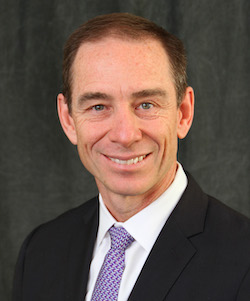Viewpoint: Why We Need Buildings Framed With Timber Bamboo

A Japanese bamboo grove in a traditional garden. Photo: Getty Images
No single building type or material will allow us to build our way out of our climate and decarbonization challenges. We need to reuse and renovate what we already have and when we do build new, we need to work with each material for what it does best—creating hybrid building solutions that optimize at every turn.
Timber bamboo is an important underexploited resource that could do much to help.
We focus on fibers like timber pine today because it has predictable properties, abundant (but not unlimited) supply and can be beautiful if left exposed. Multiple species and grades exist.
To work around timber pine’s inherent flaws, engineered wood products such as glulam beams and mass plywood panels often mix timber species and grades. Similarly, veneers and pressed laminates minimize the impact of timber pine board flaws and achieve better use of the fibers.
If we are not careful, however, we will quickly exhaust timber pine faster than we can grow it. With our appetite for more timber products, the not-unlimited supply is shrinking faster than we would like to admit. Forest recovery time after the now-perennial wildfires is measured in decades, and we don’t have a fast-moving fix when that damage is done.
So although wood is good, and responsibly sourced mass timber and timber pine will help our lower-carbon building efforts, they are not enough.

Donald W. Davies
To buy more time, let’s expand our thinking beyond timber pine to include other rapidly grown fibers that are even stronger and faster-growing, an approach called fiber optimization. It means using the best material for each load application and using the fiber where its mechanical properties are most appropriate.
Fiber optimization also entails balancing the carbon and other impacts associated with creating and harvesting the fibers.
That means when two wood species perform the same structurally, we ideally want to specify the stronger and faster-growing species—and timber bamboo is one of nature’s fastest-growing structural fibers.
It can reach over 100 ft in height and can be harvested annually, growing back the following year. The secret is in its grassy roots, which don’t die and don’t need to regrow after each harvest. As bamboo’s root structure matures, the above-ground biomass grows faster and more efficiently if water and nutrients are available to sustain it.
As a result, the volume of bamboo fibers grown in four to seven years equals the volume of timber pine fibers grown in 40 to 60 years.
Timber bamboo favors moist, humid areas closer to the equator. The southeast U.S. and many parts of Central America, the northern regions of South America and greater Southeast Asia all have prime bamboo-growing regions and potential. Some fallow cotton and citrus plantations within the U.S. have started experimenting with growing it, but the American market for the material is in its infancy.
If bio-based solutions are essential to our future built environment, with an unlimited demand for limited resources, the faster we move toward growing and using more timber bamboo, the better.
Like any engineered 'wood' product, timber bamboo must pass extensive structural and safety tests to meet building codes.
Like other products, timber bamboo needs to be milled and manufactured into familiar shapes and forms before being incorporated into modern, western-style buildings. As with any engineered “wood” product, it must pass extensive structural and safety tests to meet building codes.
But its mechanical properties match or typically exceed timber pine.
A few pioneering companies are introducing timber bamboo into the North American market, but if we are to expand its use we need more support for early adopters and more creative, fiber-optimized designs that include more than just timber pine.
Buildings produce nearly 40% of all greenhouse gases annually. Given the accelerating signs of climate change, how we create and maintain the built environment is critical to finding solutions for where we go next. We need to accelerate use of fiber= optimized design and timber bamboo—and we don’t have time to waste.
Donald W. Davies, PE, S.E., is president of Seattle-based engineer Magnusson Klemencic Associates.




